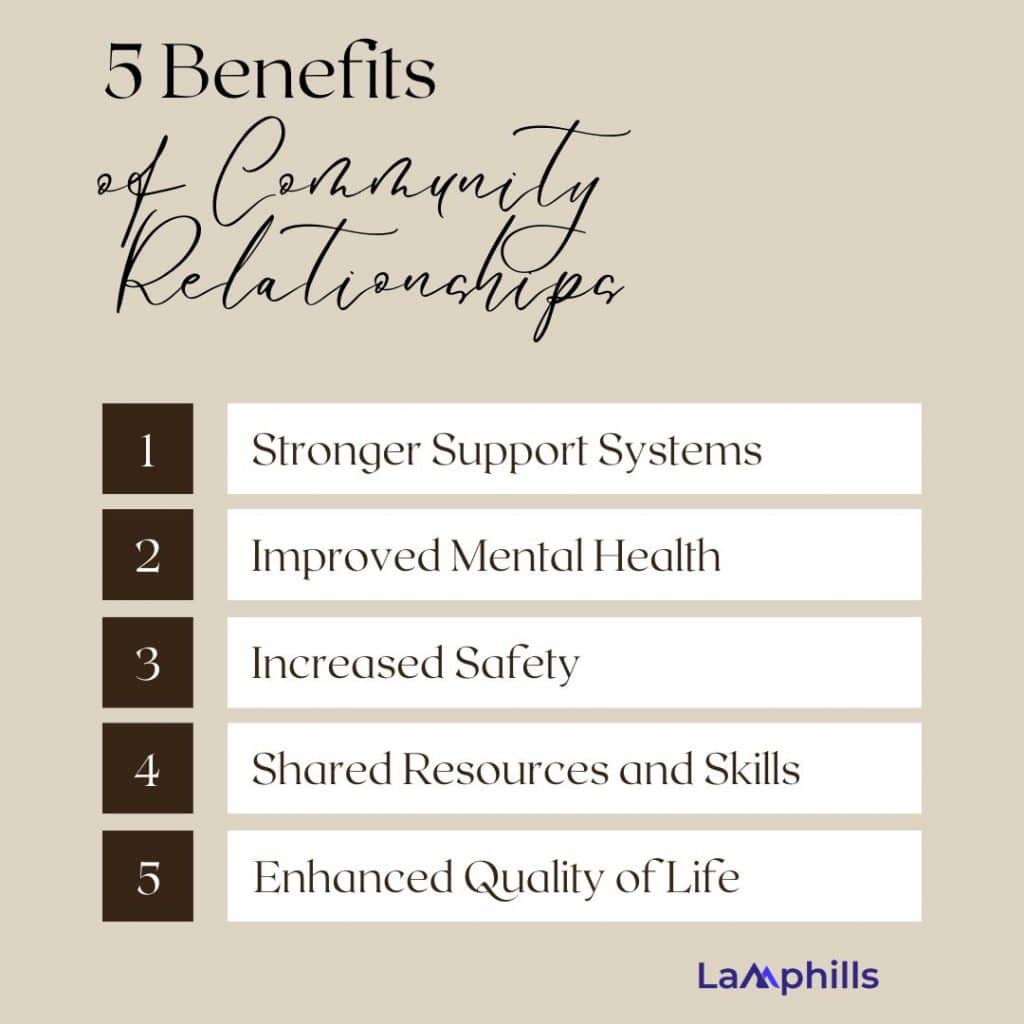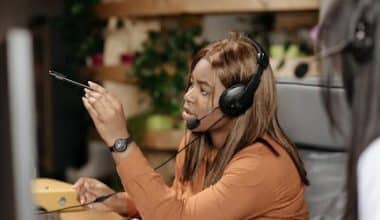Community relations are about being genuine and showing that your business cares. Whether it’s sponsoring local events, volunteering, or just engaging in community conversations, every little bit helps. When you prioritize community relations, you’re not just building a business; you’re building a legacy. I’ve seen firsthand how effective strategies can bring people together and create a positive environment for everyone involved.
So, join me, and let’s explore the best strategies for enhancing your community relations. By the end of this journey, you’ll have an idea of how to make your business a beloved part of the community.
Key Points
- Knowing the specific duties of a community relations director is crucial. It’s about managing events, promoting your organization, and building strong community relationships.
- Being a community relations director is about creating a win-win situation. They offer services and support to the community.
- Community relations, in a nutshell, is about being a good neighbor, because strong communities make for strong businesses, and that’s something we can all get behind.
- Regarding community gatherings and forums, the community relations director is the company’s voice, advocating for the company’s interests and building bridges of understanding.
- Community relations are all about building bridges between a business and the folks who live around it.
Community Relations
Community relations is about building and maintaining a positive relationship between a business or organization and the community it serves. I remember when I was working with a small non-profit some years ago, we focused on improving community relations by engaging directly with local residents. We didn’t just send out newsletters or post on social media. We organized neighborhood clean-ups, held regular town hall meetings, and participated in local fairs. This hands-on approach helped us understand what the community needed and how we could best support them.
Good community relations start with genuine care and a willingness to listen. It’s not just about doing good deeds; it’s about creating a lasting bond with the community. When businesses and organizations invest time and effort into community relations, they build trust and loyalty. This, in turn, helps them thrive because people prefer to support those who support them.
Lamphills Community Relations Checklist
Community Relations Director
A community relations director is the choicest, most essential, and most important part of a community. They’re the bridge between residents and organizations, and they’re the driving force behind community initiatives. They’re all about connecting people, solving problems, and ensuring everyone feels at home. Additionally, they organize events that bring everyone together, like picnics, workshops, or town hall meetings. Plus, they’re always looking for ways to improve communication, whether it’s through newsletters or social media.
Furthermore, a community relations director is the go-to person for bringing people together and ensuring everyone feels heard and included. For example, when you’ve got a problem or an idea you want to share with your community, you turn to the community relations director. They’re always there to keep things running smoothly.
How To Become a Community Relations Director
If the part or steps for becoming a community relations director aren’t entirely clear to you, join me now. Let’s go into the world of research and chart my course. Here are seven steps I discovered on how to become a community relations director:
#1. Check Your Education Path
Start by researching the educational requirements for community relations director roles. A large majority of directors have bachelor’s degrees in fields like public relations, communication, marketing, or business administration. These programs provide a solid foundation for the principles and practices of effective communication and relationship management. If you’re not planning on getting a degree, don’t worry. There are success stories of directors who started with a high school diploma or GED, proving that determination and skill can sometimes outweigh formal education.
Also Read: What Is the Role of Public Relations in Marketing?
#2. Build Your Skill Set for Community Relations Director Positions
To succeed as a community relations director, you need a versatile skill set. Begin by improving your communication skills, both written and verbal, as clear and effective communication is crucial in this role. Read 8+ Communications Skills Every Specialist Needs to Thrive in 2024
Interpersonal skills are equally important, as building and maintaining relationships is at the heart of community relations. Attend public speaking workshops to improve your confidence and ability to engage with an audience. Marketing courses can also be beneficial, teaching you how to create and manage campaigns that resonate with your community.
#3. Fulfill Relevant Training and Internship Obligations
Practical experience is invaluable, so you need to seek out internships or volunteer positions with non-profits, local businesses, or community organizations. These roles will provide you with a real-world understanding of the field and allow you to apply your classroom knowledge. For instance, I interned at a local non-profit where I helped organize community events, managed social media accounts, and wrote press releases. This hands-on experience was instrumental in developing my skills and understanding the day-to-day operations of community relations.
#4. Understand the Job
Go deep into the specific duties of a community relations director. The role involves managing events, creating marketing materials, building strong community relationships, and promoting your organization. Spend time reading job descriptions and talking to current professionals in the field to get a clearer picture.
For example, I learned that in some roles, directors are responsible for planning alumni reunions, managing marketing budgets for senior living facilities, or even maintaining the organization’s website. Understanding these duties will help you prepare for the varied responsibilities you’ll face.
#5. Acquire Experience as a Community Relations Director
Getting to the director level usually takes a few years of relevant experience. Positions like marketing director, account executive, or team lead are common stepping stones. These roles offer opportunities to develop your skills in communication, relationship building, and project management.
#6. Develop Your Resume
As you gain experience, focus on creating a compelling resume. Highlight your skills, achievements, and relevant experience. Tailor your resume to each job application, emphasizing the aspects of your background that align with the specific job description. For instance, I make sure to showcase my event management experience, my ability to create engaging marketing campaigns, and my success in building community partnerships. A well-crafted resume will help you stand out to potential employers.
#7. Pursue Employment Opportunities
Finally, start looking for job openings. Use job boards to find listings, but also leverage your network. Connect with professionals in the field through LinkedIn, attend industry events, and reach out to organizations you admire. Networking can often lead to job opportunities that aren’t advertised publicly. I regularly attend community events and industry conferences, where I’ve made valuable connections that could lead to future job opportunities. Remember, building a strong network can open doors and help you land that coveted community relations director role.
What Are the Objectives of Community Relations?
The objectives of community relations encompass various goals aimed at providing a positive and mutually beneficial relationship between an organization and the community it operates within. Here are my suggested key objectives:
- Building trust and credibility: Establishing a trustworthy reputation by being transparent, reliable, and responsive to community needs and concerns.
- Enhancing public image: Improving the organization’s public perception through active involvement and support for community initiatives.
- Fostering goodwill: creating a positive environment where the organization is seen as a valuable and supportive member of the community.
- Facilitating open communication: maintaining open lines of communication with community members to understand their needs, share information, and address any issues promptly.
- Encouraging community involvement: promoting employee participation in community activities, thereby strengthening the bond between the organization and the community.
- Supporting economic development: contributing to the community’s economic growth through job creation, local partnerships, and support for local businesses.
- Promoting social responsibility: Demonstrating commitment to social responsibility by supporting charitable causes, educational initiatives, and environmental sustainability efforts.
What Is the Difference Between Community Relations and Public Relations?
Community relations and public relations are both essential components of an organization’s communication strategy, but they serve different purposes and target different audiences.
- Community relations: Community relations focus on building and maintaining a positive relationship between an organization and the local community where it operates. This involves engaging with community members, understanding their needs, and contributing to the community’s well-being. For example, I used to work for a company that sponsored local events, participated in community service projects, and supported local schools and nonprofits. We aimed to show that we cared about the community and were committed to being a good neighbor. The emphasis was on creating a strong, positive, and lasting presence in the local area.
- Public relations: Public relations, on the other hand, is about managing the overall image and reputation of the organization in the eyes of the broader public, media, investors, and other stakeholders. This involves crafting and sharing the right messages through press releases, interviews, social media, and other communication channels. The aim was to enhance the organization’s reputation on a larger scale, beyond just the local community.
In essence, community relations are about grassroots engagement and fostering local goodwill, while public relations deal with shaping and maintaining a positive image at a broader, more public level. Both are important but operate in different spheres and require different strategies.
Also Read: What Is the Role of Public Relations in Marketing?

What Are the Benefits of Community Relationships?
Living in a small town, I’ve experienced firsthand how community relationships can transform everyday life. From lending a helping hand to sharing resources, the sense of belonging and support within a community is unmatched. Let me go into the benefits I’ve witnessed through these connections.
Stronger Support Systems
Community relationships build stronger support systems. When you know your neighbors and others in your community, you have people to rely on during tough times. For example, if you fall ill or face a family emergency, community members can offer help with daily tasks. This sense of support fosters a feeling of security and belonging.
Improved Mental Health
Community relationships significantly boost mental health. Being part of a community reduces feelings of loneliness and isolation. Regular interactions with familiar faces can lift your spirits and provide emotional support. Participating in community activities or simply chatting with neighbors can reduce stress and anxiety.
Increased Safety
Community relationships play a key role in increasing safety. Knowing your neighbors means more eyes looking out for suspicious activity. A close-knit community is more likely to notice and address potential threats quickly. This collective vigilance creates a safer environment for everyone.
Shared Resources and Skills
Community relationships facilitate the sharing of resources and skills. Whether it’s borrowing tools, sharing garden produce, or exchanging expertise, a connected community can efficiently pool resources. This sharing not only saves money but also strengthens bonds as people help each other out.
Enhanced Quality of Life
Community relationships enhance the overall quality of life. Engaging with your community can lead to more local events, cleaner public spaces, and a greater sense of pride in where you live. These interactions create a vibrant and enjoyable living environment, making everyday life more fulfilling and enjoyable.
How Do You Build Community Relationships?
Building strong community relationships can transform a neighborhood from a collection of houses into a thriving, supportive network of friends and allies. Imagine walking down your street, greeting familiar faces, and feeling a sense of belonging. It all starts with simple, yet powerful, actions that bring people together. Let’s explore eight dynamic ways to build relationships that will turn your neighborhood into a friendly community.
#1. Host Local Events
Hosting local events is a great way to build community relationships. Think of events like block parties, potlucks, or seasonal festivals. These gatherings provide a relaxed environment where neighbors can interact and get to know each other better. For example, a summer barbecue can bring together families who might not otherwise cross paths. The key is to create a welcoming atmosphere where everyone feels included, thus strengthening community relationships.
#2. Volunteer Together
Volunteering as a group can significantly build community relationships. Organize activities like park clean-ups, tree planting, or visiting nursing homes. When people work together towards a common goal, they build a sense of unity and shared purpose. This collaborative spirit fosters deeper community relationships, as people feel a sense of pride and connection to their neighborhood.
#3. Support Local Businesses
Supporting local businesses is crucial for building community relationships. Frequenting neighborhood stores, cafes, and farmers’ markets helps create a robust local economy. When you engage with local business owners and fellow customers, you build personal connections. For instance, knowing your barista’s name and chatting with them builds familiarity and trust, enhancing community relationships.
#4. Organize Sports Leagues
Organize Sports Leagues: Organizing sports leagues is an excellent way to build community relationships. Set up teams for various sports, such as soccer, basketball, or even frisbee. Regular games and practices bring people together and encourage teamwork. The friendly competition and shared experiences help build strong community relationships as participants bond over their love of sports.
#5. Engaging Your Employees
If you run a local business, engaging your employees in community activities can build community relationships. Encourage staff to volunteer at local events, participate in neighborhood projects, or join community groups. Hosting team-building activities that include the community fosters connections beyond the workplace. When employees feel engaged and connected to their community, it enhances their sense of purpose and strengthens community relationships. This involvement also showcases your business’s commitment to the community, further building trust and goodwill.
#6. Use Social Media
Utilizing social media platforms can effectively build community relationships. Create a neighborhood Facebook group or use apps like Nextdoor to keep everyone informed about local news and events. Social media allows for easy communication and quick dissemination of information. Online interactions often translate to stronger offline connections, enhancing community relationships.
#7. Hold Regular Meetings
Regular community meetings are essential for building community relationships. These gatherings provide a forum for discussing local issues, planning events, and addressing concerns. When community members come together to share their ideas and solutions, they feel more invested in their neighborhood. This collective involvement strengthens community relationships and fosters a sense of belonging and mutual support.
Conclusion
Community relations are the heartbeat of any thriving neighborhood. When we build strong community relations, we create bonds that uplift everyone. It’s about knowing your neighbors, lending a helping hand, and sharing moments that matter. Good community relations make us feel safe, valued, and connected. Let’s keep nurturing these ties because when community relations flourish, everyone benefits. Remember, strong community relations are not just about living near each other—they’re about living well together.
Related Articles
- What Is Consumer Public Relations?: Key Strategies for Connecting with Your Audience
- 15 Creative PR Email Templates to Boost Your Outreachs Success ( Plus Tips on Writing One)
- 10 Must Have Personal Traits of a Media Relations Expert
- Public Relations Services: Trusted Public Relations Strategies for Success






